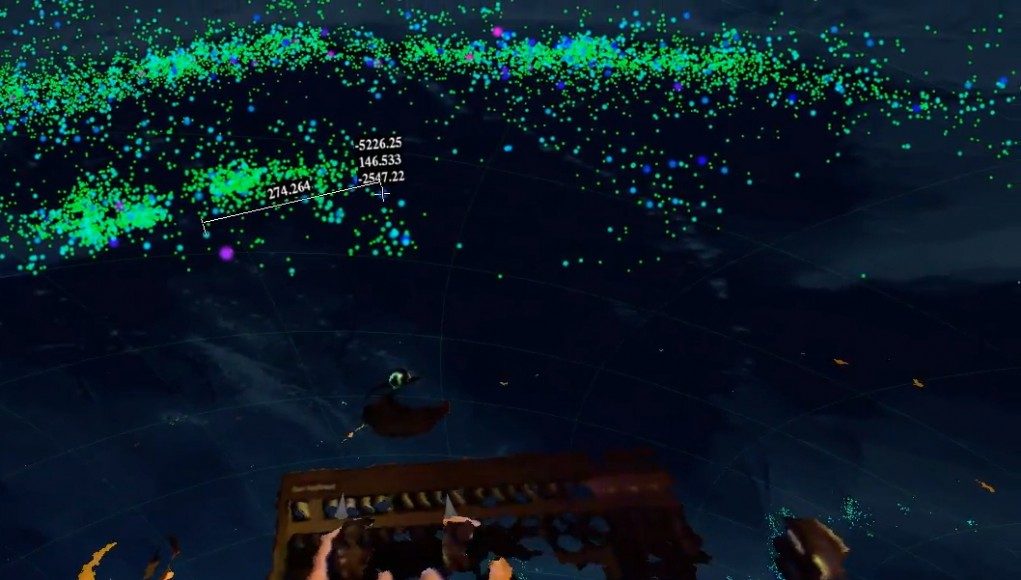In what seems like a total reversal of the usual paradigm, a VR researcher is showing the benefits of augmenting the virtual world with the real world.
In ‘traditional’ augmented reality, we take a scene from real life and overlay it with useful digital information that in some way enhances the experience.
Oliver Kreylos, a VR researcher from UC Davis, has turned the tables by bringing the real world into the virtual world for the same purpose.
Kreylos, who last told us about the important of proper stereoscopic 3D rendering, has adapted his custom VRUI Toolkit environment to work with the Oculus Rift and Razer Hydra. A recently released video shows the powerful data exploration that can be done in virtual reality:
While I find the ability to interact and analyze complex data to be very interesting, what really strikes me is what Kreylos does at 3:28 in the video. He augments the virtual world with the real world by bringing his desk into the VR environment using the Microsoft Kinect.
Due to the Kinect’s limitations, the results are a bit jittery, but the implications are clear: he can easily reach out and touch everything on the desk. This is significant for Kreylos as he is used to using CAVE environments where you can see your hands. With the ‘augmented virtual reality’ he doesn’t have to guess where his hands, the mouse, or the keyboard are because they now exist in the virtual world.
Kreylos has also used this technique to bring his entire body into a VR environment. Such capabilities is one of the many exciting possibilities that could be enabled with the inclusion of a depth-camera mounted to the Oculus Rift.







